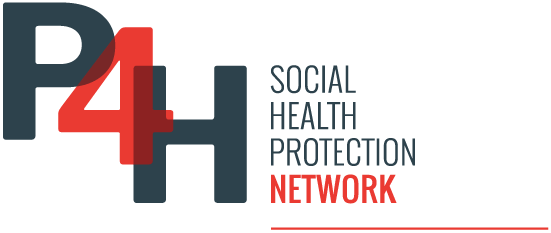This document from the Pan American Health Organization, published at the end of 2025, brings together recommendations for cost-effective investments for 30 public health challenges in the Latin American region.Also available in English

In Latin America, investing in health generates good returns
A new study conducted on Latin American data by the Wifor Institute confirms what health economists have been saying for a long time, that investments in a nation's health are not an expense, they are an investment.Health economists have long insisted that a nation's...

Episode-based Payments in Health – An innovative proposal for Health Plans at the CLAVS 25 congress
André Medici es consultor sénior internacional en economía de la salud y estrategia de desarrollo sanitario - Autor en el blog Monitor de Saude | Doctor en Historia Económica.At the Latin American Congress on Value in Health (CLAVS 2025), held in Rio de Janeiro on...
IBRAVS Framework: A Practical Path to Value in Healthcare and Value-Based Payment Models (Brazil)
This document (in Portuguese) published by the Brazilian Institute of Value for Health (IBRAVS) in 2023, proposes a concrete path towards the implementation of a value approach to health.
Health and economic effects of increased taxation on tobacco, alcohol, and sugar-sweetened beverages in China
China could achieve major health, economic, and fiscal benefits by increasing taxes on tobacco, alcohol, and sugar-sweetened beverages (SSBs). Modelling from 2026–2050 shows that 20% price hikes could prevent about 1.35 million deaths and generate over ¥6.8 trillion...

National Assembly Advances Dialogue on Sustainable Health Financing in Laos
The National Assembly of Laos held a workshop on financing primary health care and immunization with the Ministry of Health and partners. Participants addressed funding gaps, urged stronger coordination and budget reforms, and supported domestic financing of at least...

Details of the RIZIV care budget for 2026 in Belgium
The healthcare budget for 2026 was approved on Monday by the General Council of the National Institute for Health and Disability Insurance (INAMI). The budget includes an increase of 1.566 billion euros over the previous year, reflecting changes in the supply and...

Sweden’s Cost-Driven COVID-19 Policy Sparks Debate Over Protection for Seniors
Sweden’s autumn 2025 COVID-19 plan offers free shots only to those aged 75+ and vulnerable adults 18–74, excluding healthy 65–74-year-olds. Officials cite low cost-effectiveness and stronger immunity. Experts warn this could raise risks. Denmark and several EU states...
Value of pharmacy services for common illness symptoms covered by universal coverage at drugstore compared to outpatient services at a hospital in Thailand
Since October 2022, the National Health Security Office has incorporated pharmacy services for 16 common conditions, including headache, dizziness, pain in joint, muscle pain, fever, cough, sore throat, stomachache, diarrhoea, constipation, dysuria, vaginal discharge,...
Smart health spending: How to make every peso count
In this document published by the Inter-American Development Bank in 2023, the question of how to guarantee health for the populations of Latin America at a time of global crisis is addressed. The authors propose an approach where not only should health spending be...
Less is more: consumers’ preferences for value-based insurance design in Switzerland
This study used a discrete choice experiment in Switzerland to examine consumer preferences for value-based insurance design (VBID). Findings showed a strong status quo bias and resistance to higher cost-sharing or limiting low-value care, with preferences varying by...

Handle With Care: Four Ways to Give Asia’s Health Systems a Needed Safety Upgrade
The pursuit of universal health coverage (UHC) in the Asia and Pacific region has often overlooked the crucial aspect of patient safety, resulting in significant issues such as high rates of hospital-acquired infections and medication errors. This neglect not only...
Willingness to pay for a quality-adjusted life year (QALY) in Pakistan: implications for health policy
This study investigates the willingness to pay (WTP) for one additional Quality-Adjusted Life Year (QALY) among the general population in Pakistan, highlighting the economic constraints in healthcare resource allocation. A survey revealed a mean WTP of 114,006.4...
Health impact and economic evaluation of the Expanded Program on Immunization in China from 1974 to 2024: a modelling study
The Expanded Program on Immunization (EPI) in China, initiated by WHO in 1974, has significantly reduced disease burden by vaccinating against eight pathogens, averting an estimated 703 million cases and 2.48 million deaths over 50 years. The program has also...
Bridging healthcare gaps through specialized mobile healthcare services to improve healthcare access and outcomes in rural Hungary
This study assessed a public insurance-based telemedicine system in rural Hungary, where 12 Mobile Healthcare Service Centers provided general and specialist care to over 21,000 residents, resulting in the diagnosis of new hypertension and diabetes cases and high...
